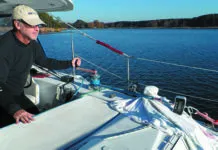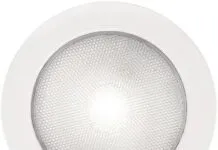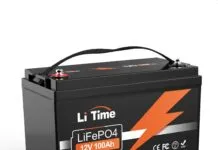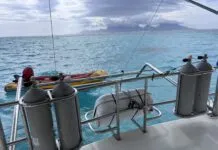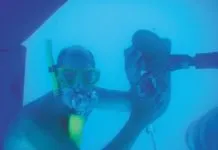
For those of us with dodgers, we know how truly practical they can be. They protect the crew from wind and water splashes and make the overall sailing experience so much more enjoyable. But we also know how important it is to have full and clear visibility. Constant exposure to the sun and weather can easily and quickly make the plastic windows yellowish and dull, making visibility difficult.
Today, there are many different types of plastic window materials on the market claiming longer and more durable life spans, more resistance to scratches, sun and weather, etc. And, as all things do, these come with their respective price points as well.
There are also myriad products on the market making their own claims of better protection against the sun and elements via a protective coating. Many brands offer multi-step solution products to restore the plastic windows to a clearer finish. Keep away from any miracle products claiming to restore to new condition. They simply do not work as claimed. But, if you know of such a product, this writer would be delighted to hear about it!

Don’t get me wrong, I do use products such as Plexus and NOVUS to regularly coat and protect my plastic windows. But I am not under any illusion that they will protect them from fading forever. It will just happen over a longer period of time. As for my dodger, pictured in this article, it is now well over 15 years old and the windows are still very much see-through. The care I’ve been giving them has unquestionably been helpful. But I wanted to protect them even more in order to slow the continuous deleterious effects of the sun and the environment for as long as possible, the cost of replacement of a full dodger or windows is an important factor.
So, the truly best way to give these windows the longest possible life span is to physically cover them, which is exactly what I did. It only took me a day to design, create a pattern and have a perfectly fitting cover made.
MAKE YOUR OWN DODGER COVER PATTERN
This is an easy process that will save you time and money. You will not have to find and wait for a canvas shop to come and take measurements, etc. Once you have your pattern made, you will also have the option of purchasing your own Sunbrella fabric and find a local shop or tailor to sew your cover, which saves you time and money.
SUPPLIES
- 3 or 4 large-format craft cardboard sheets. You can purchase these at any craft and hobby store—I got mine at my local dollar store.
- A roll of masking tape
- Scissors
- A Sharpie pen
PROCESS
- Starting on the front window, a little past the center, use masking tape to apply and hold the cardboard in place.
- With the Sharpie, identify the center line from top to bottom.
- Tape the next cardboard to that first piece and, as you turn the corner, make folds in the cardboard to shape it in place.
- Cut any excess.
- Keep repeating until you’ve covered and shaped the entire side of the dodger. Use smaller, more manageable pieces, wherever necessary.
- Once you have it all done and shaped, mark where you want the attachment points and what kind. In my case, on the side, I used the handholds.

Mark the points where you wants straps installed with Sharpie and pieces of tape. Also mark where you need snaps placed. (Photo/ Marc Robic) - Using pieces of cardboard, I made what will be two wraparound strips of Sunbrella and Velcro straps.
- On the lower side corner, I identified where I want bronze or brass eyelets to be added where a bungee cord and plastic hook will be used to stretch and secure the cover.
- On the top front window, I marked where the exiting snaps are where I secure the window when rolled up. Snaps will be added to secure the cover on the same snaps.
- Using the traveller rail, I again used pieces of cardboard to make what will be a wraparound strip of Sunbrella and Velcro straps.
- Once you have the pattern completed and still on your dodger, take a few pictures to show the canvas maker or tailor what it is and looks like.
With the pattern now in hand, I brought it to my local canvas maker and selected the Sunbrella fabric and color. Using the pattern, he made the cover using a single large piece of Sunbrella and added the attachment strips of Sunbrella and Velcro. Once the Sunbrella cover and attachment strips were completed, we test fitted it and selected where to add the bronze eyelets.

TIPS FOR THE TAILOR ROUTE
By doing all the upfront work, you not only save time and money, but you will be certain it is exactly how you want it to be.
I used the service of a canvas maker, but you can easily find a local tailor that has a commercial grade sewing machine. If you purchase your Sunbrella fabric at a large fabric store, make sure you buy enough to sew a seam on the outer edges, which need about an inch past all the edges of your finished pattern. Also, you’ll need to buy color-coded, outdoor, UV-resistant thread and a roll of Velcro at the same time.













